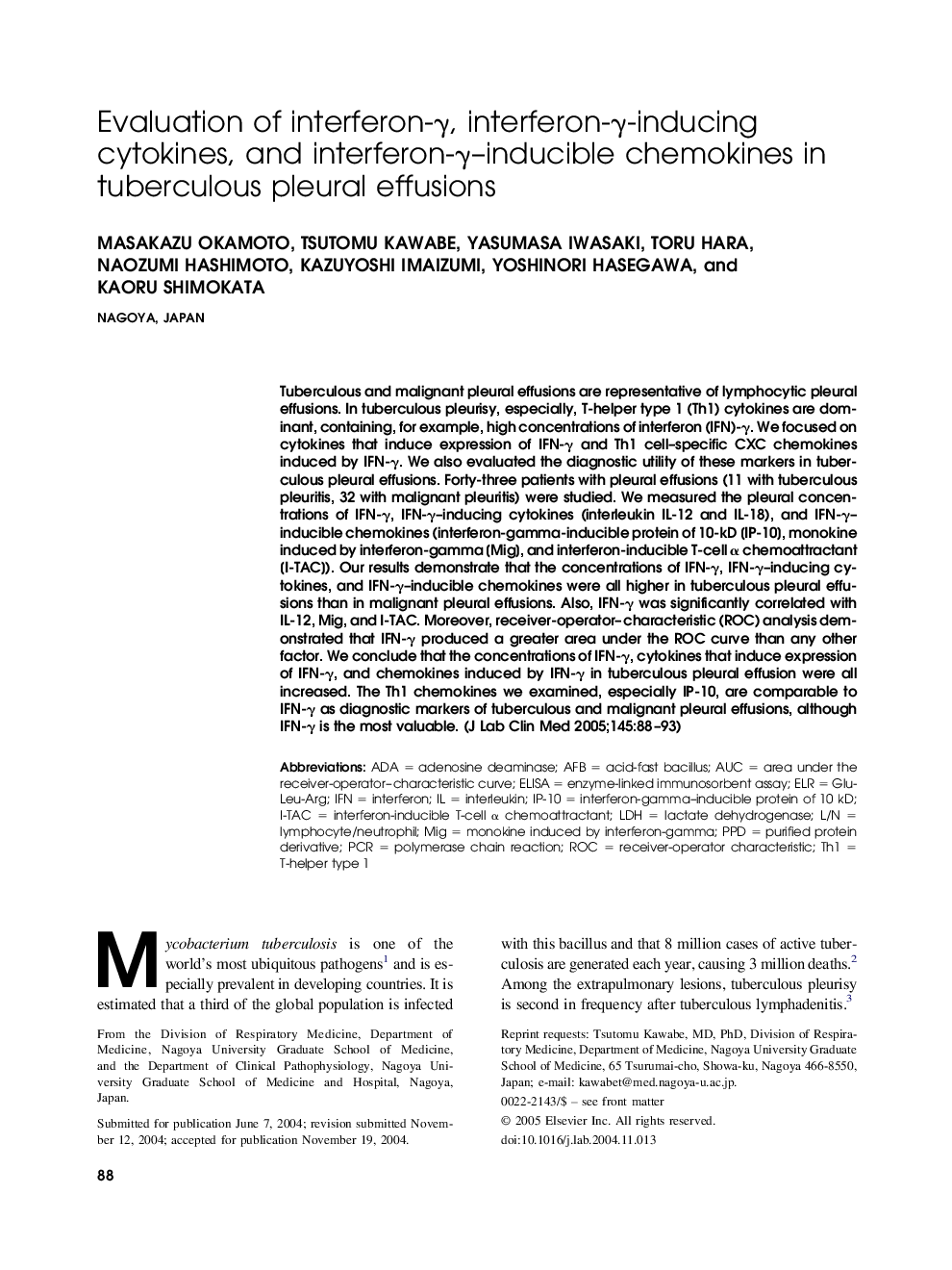| Article ID | Journal | Published Year | Pages | File Type |
|---|---|---|---|---|
| 9296470 | Journal of Laboratory and Clinical Medicine | 2005 | 6 Pages |
Abstract
Tuberculous and malignant pleural effusions are representative of lymphocytic pleural effusions. In tuberculous pleurisy, especially, T-helper type 1 (Th1) cytokines are dominant, containing, for example, high concentrations of interferon (IFN)-γ. We focused on cytokines that induced expression of IFN-γ and Th1 cell-specific CXC chemokines induced by IFN-γ. We also evaluated the diagnostic utility of these markers in tuberculous pleural effusions. Forty-three patients with pleural effusions (11 with tuberculous pleuritis, 32 with malignant pleuritis) were studied. We measured the pleural concentrations of IFN-γ, IFN-γ-inducing cytokines (interleukin [IL]-12 and IL-18), and IFN-γ-inducible chemokines (interferon-gamma-inducible protein of 10-kD [IP-10], monokine induced by interferon-gamma [Mig], and interferon-inducible T-cell α chemoattractant [I-TAC]). Our results demonstrate that the concentrations of IFN-γ, IFN-γ-inducing cytokines, and IFN-γ-inducible chemokines were all higher in tuberculous pleural effusions than in malignant pleural effusions. Also, IFN-γ was significantly correlated with IL-12, Mig, and I-TAC. Moreover, receiver-operator-characteristic (ROC) analysis demonstrated that IFN-γ produced a greater area under the ROC curve than any other factor. We conclude that the concentrations of IFN-γ, cytokines that induced expression of IFN-γ, and chemokines induced by IFN-γ in tuberculous pleural effusion were all increased. The Th1 chemokines we examined, especially IP-10, are comparable to IFN-γ as diagnostic markers of tuberculous and malignant pleural effusions, although IFN-γ is the most valuable.
Keywords
Related Topics
Health Sciences
Medicine and Dentistry
Medicine and Dentistry (General)
Authors
Masakazu Okamoto, Tsutomu Kawabe, Yasumasa Iwasaki, Toru Hara, Naozumi Hashimoto, Kazuyoshi Imaizumi, Yoshinori Hasegawa, Kaoru Shimokata,
